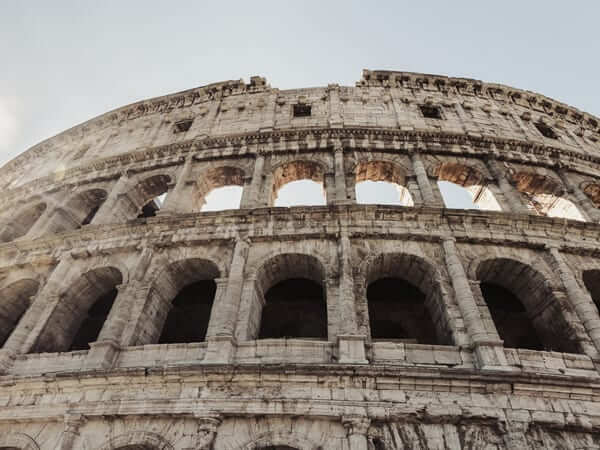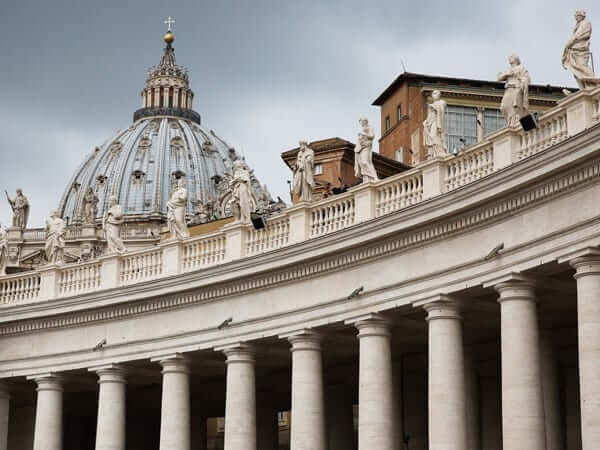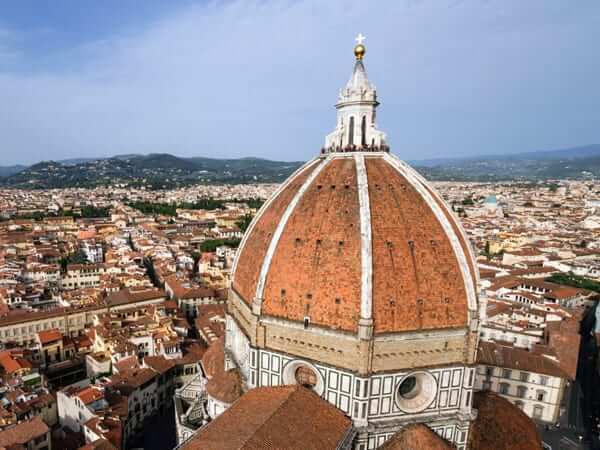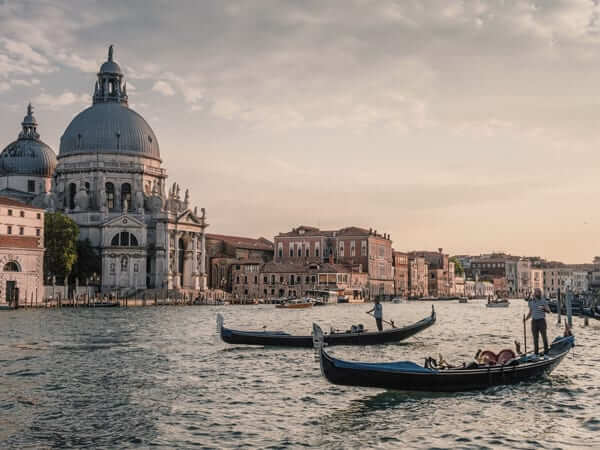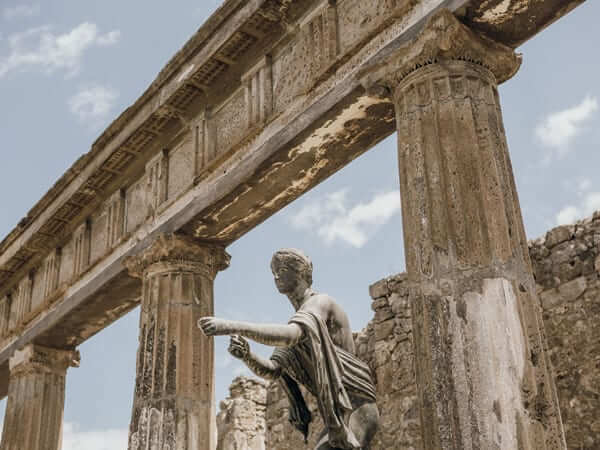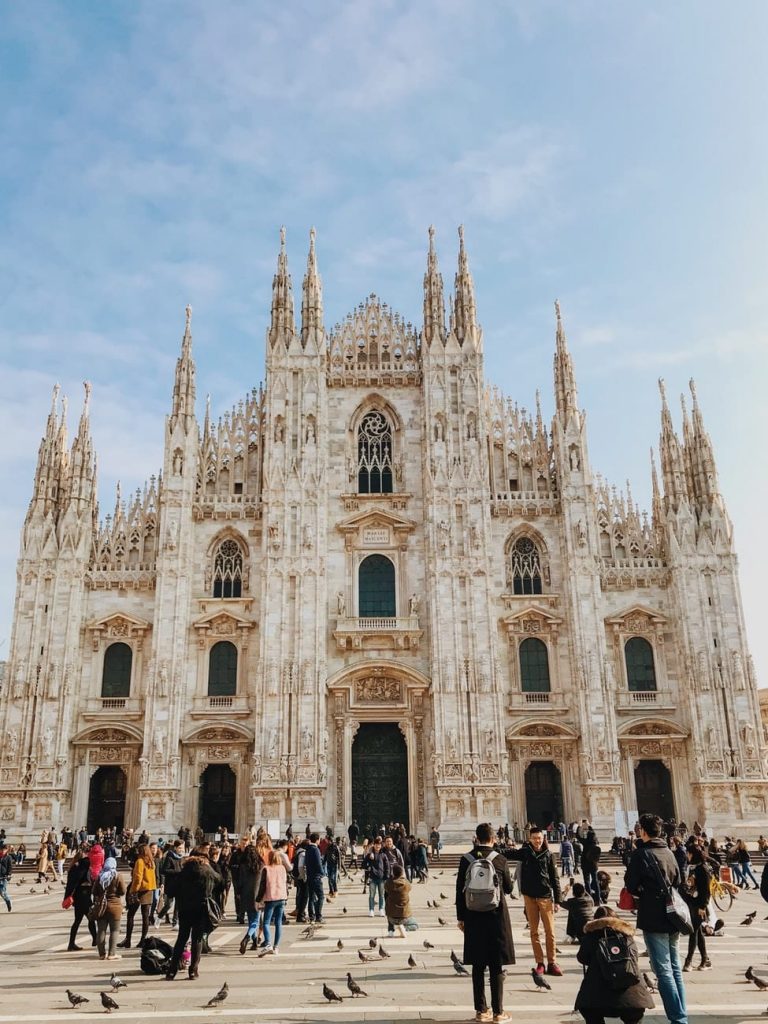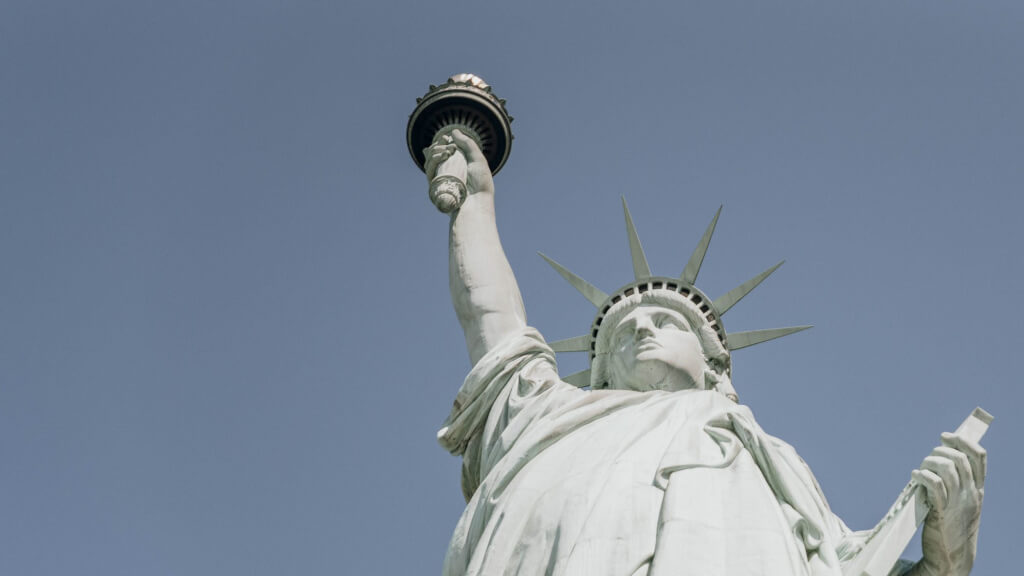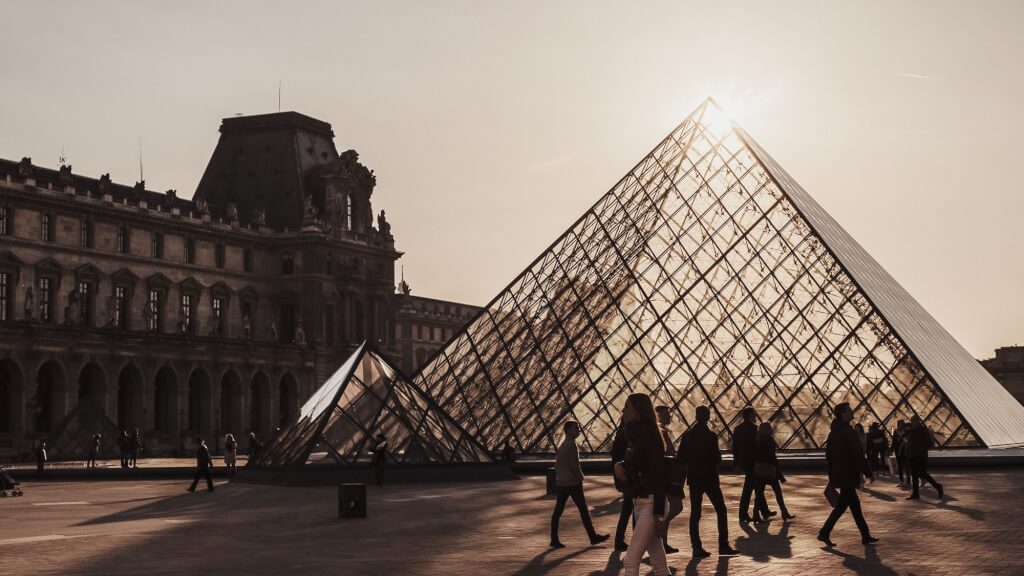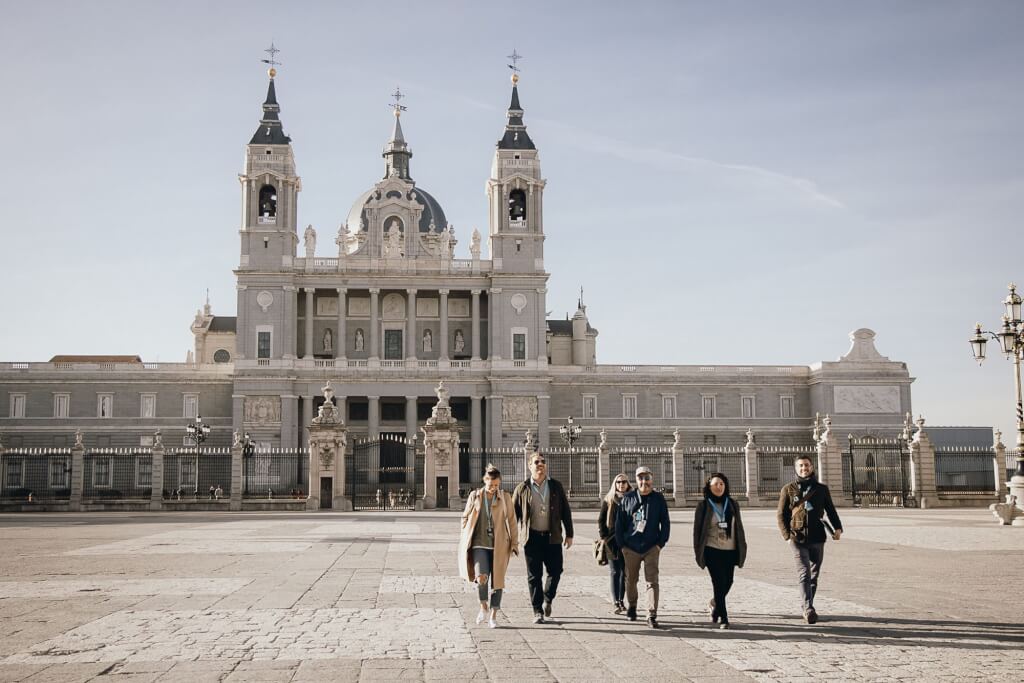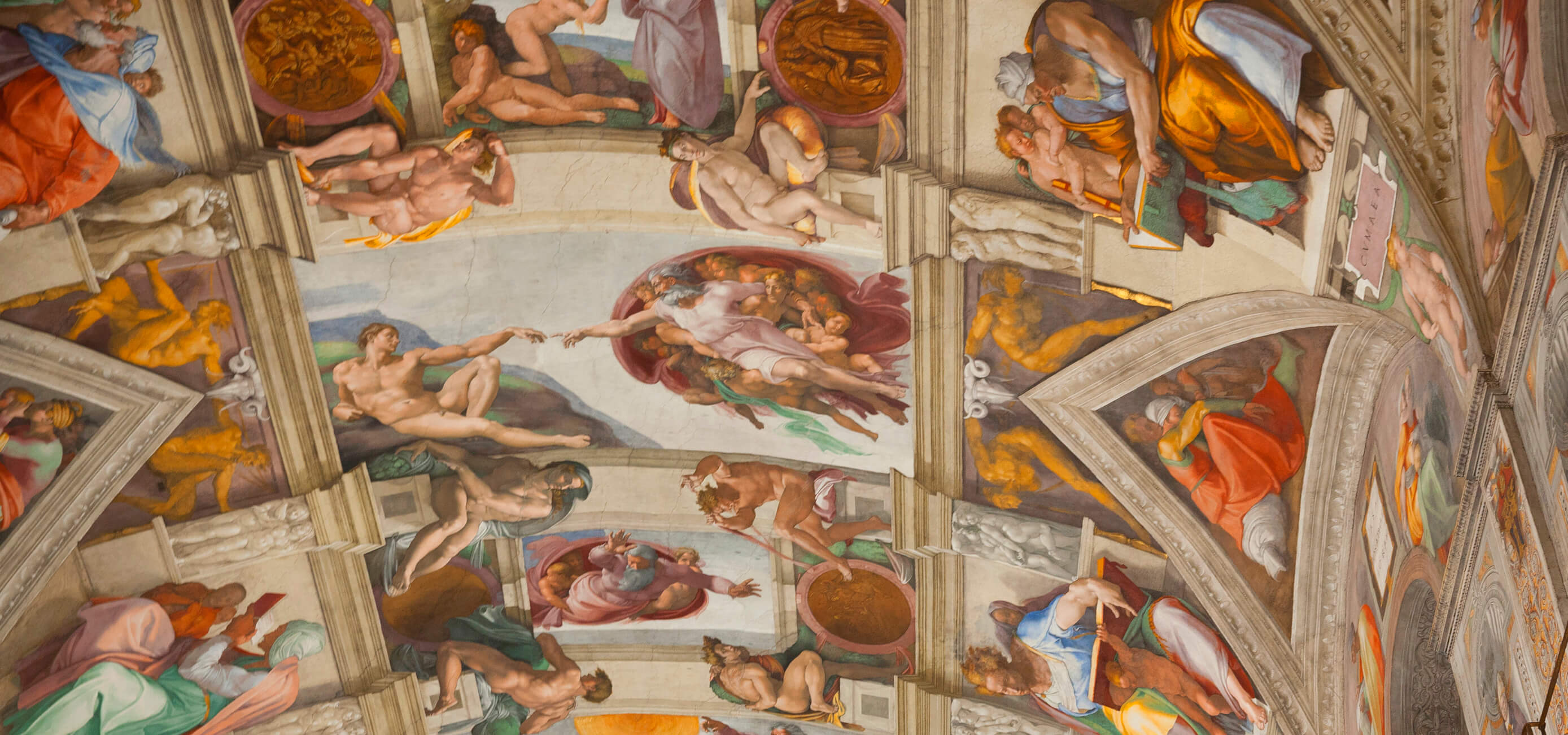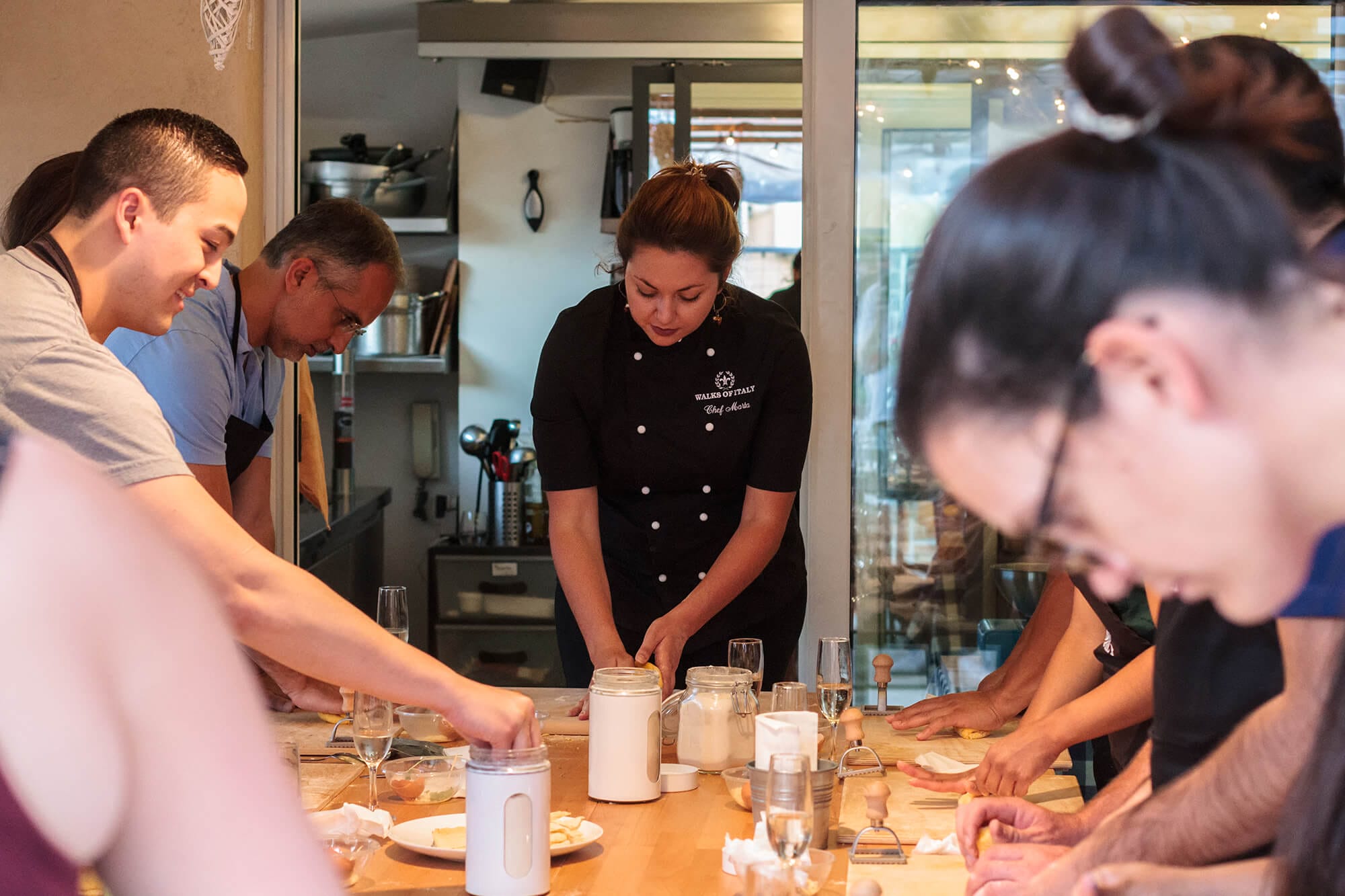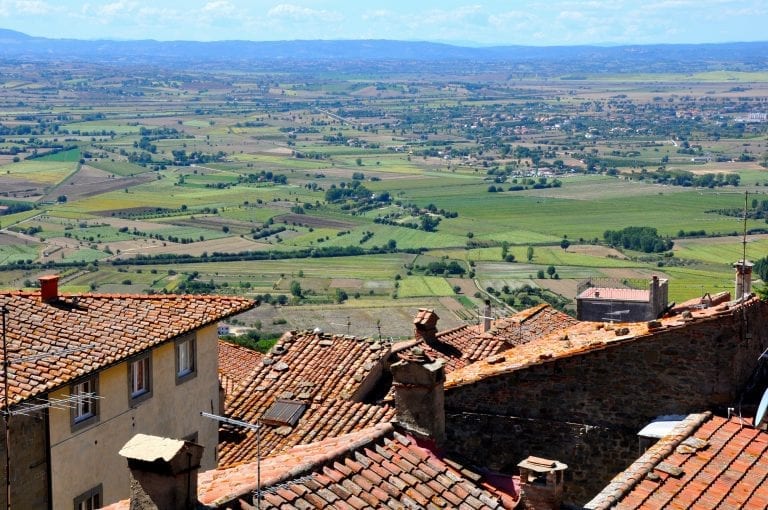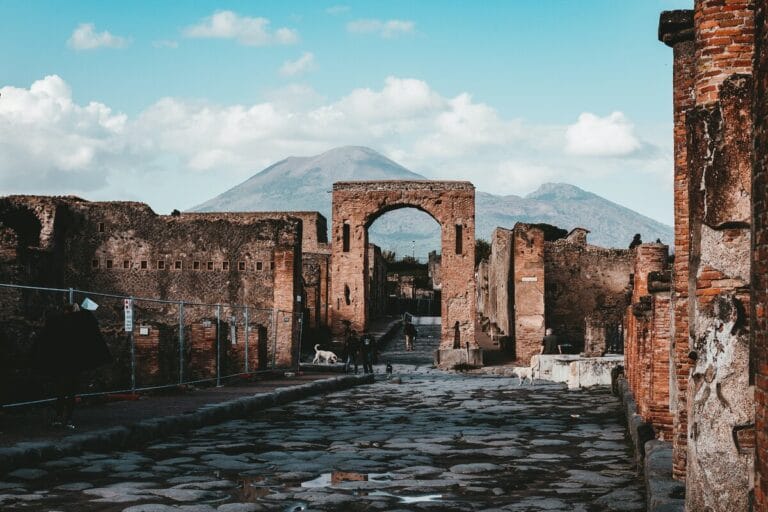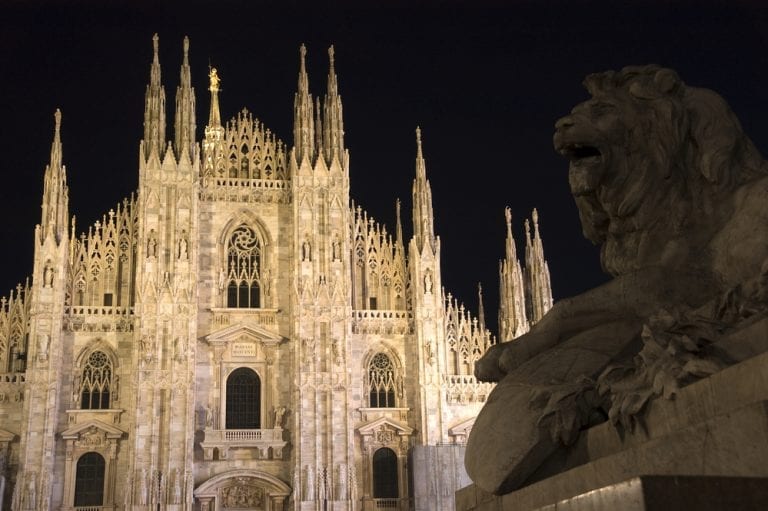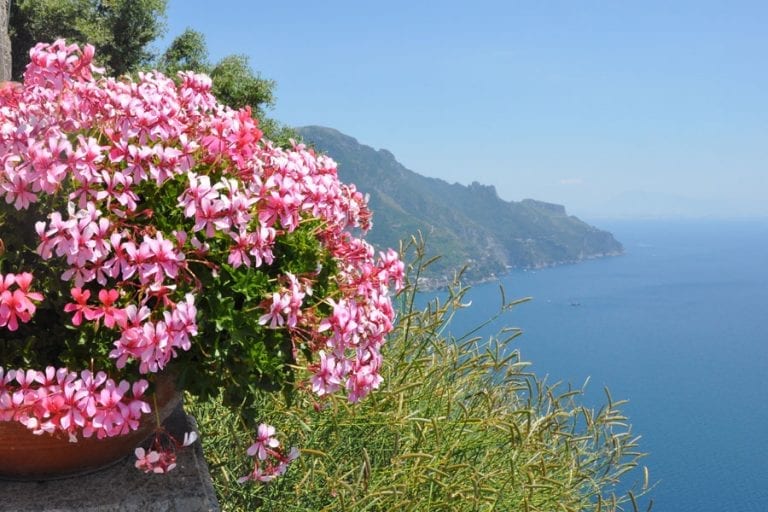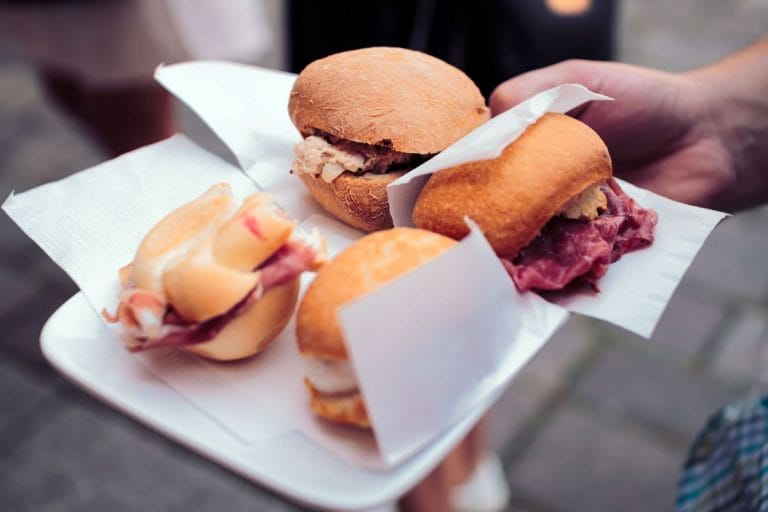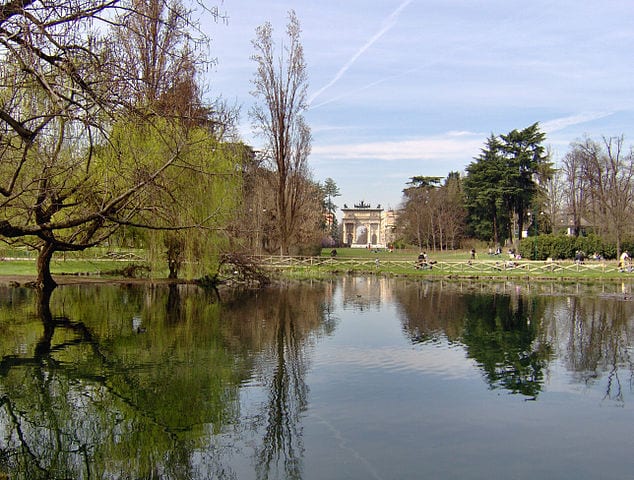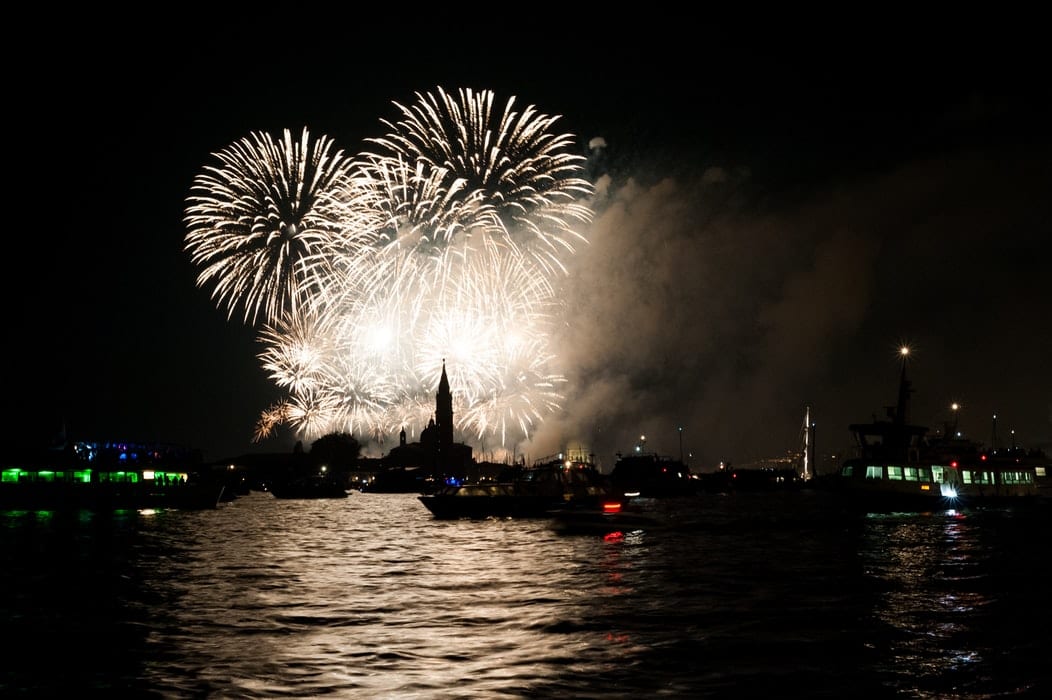
The Complete Guide to Italy’s Festivals and Celebrations
November 26, 2024
No matter what time of year you visit, there’s always plenty to do in Italy! Of course, you’ll be spoiled for choice with so many monuments, museums, and towns to see, but participating in local festivals is hands down the best way to experience Italy’s festivals and authentic culture.
Famous celebrations like Carnevale and large music festivals tend to dominate the center stage, but lesser known gems like Ferragosto and Regata are equally worth investigating. So, get your calendar ready for an exciting lineup of Italian festivals!
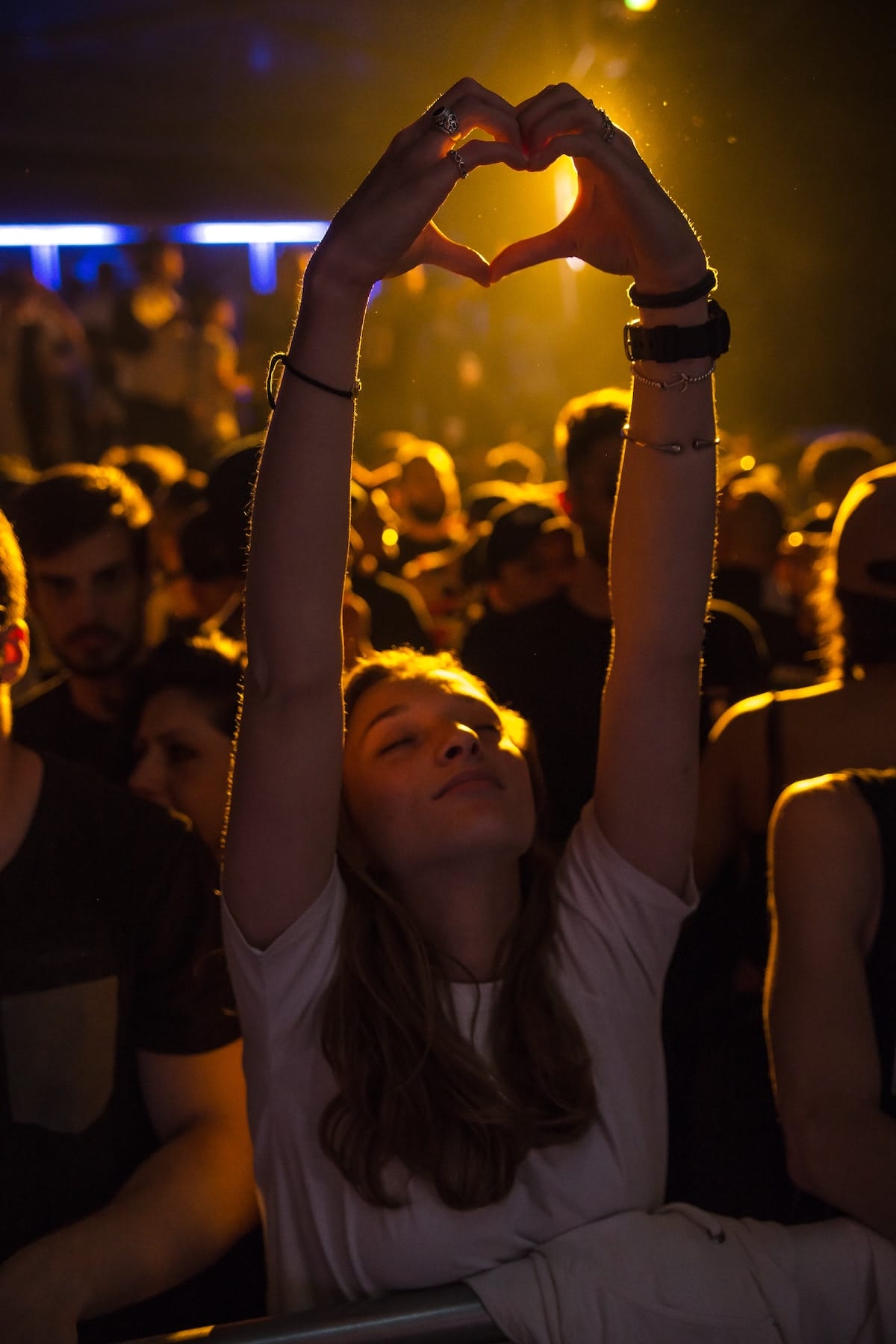
You’ll end up in love with more than one of this Italian festivals and celebrations. Photo credit: Alfonso Scarpa
Planning your visit
The great thing about Italy is that there’s almost always some kind of event happening–no matter when you visit. With just a little planning, you can make sure that you’re ready to take advantage of the festivities! To help, we’ve compiled a little cheat sheet of our favorite Italian festivals and celebrations, including public holidays in Italy.
An important thing to keep in mind is that festivals often mean that other establishments–stores, car rental places, etc.–are closed while restaurants and hotels can book up fast. This is especially true of smaller towns. But that’s no reason to miss out!
All it takes is a little advance planning and research, and you can take full advantage of the seasonal festivities. That’s where we come in. With this breakdown of Italy’s festivals, you can plan your next Italian getaway to coincide with one of the many unique and exciting events going on throughout the year!
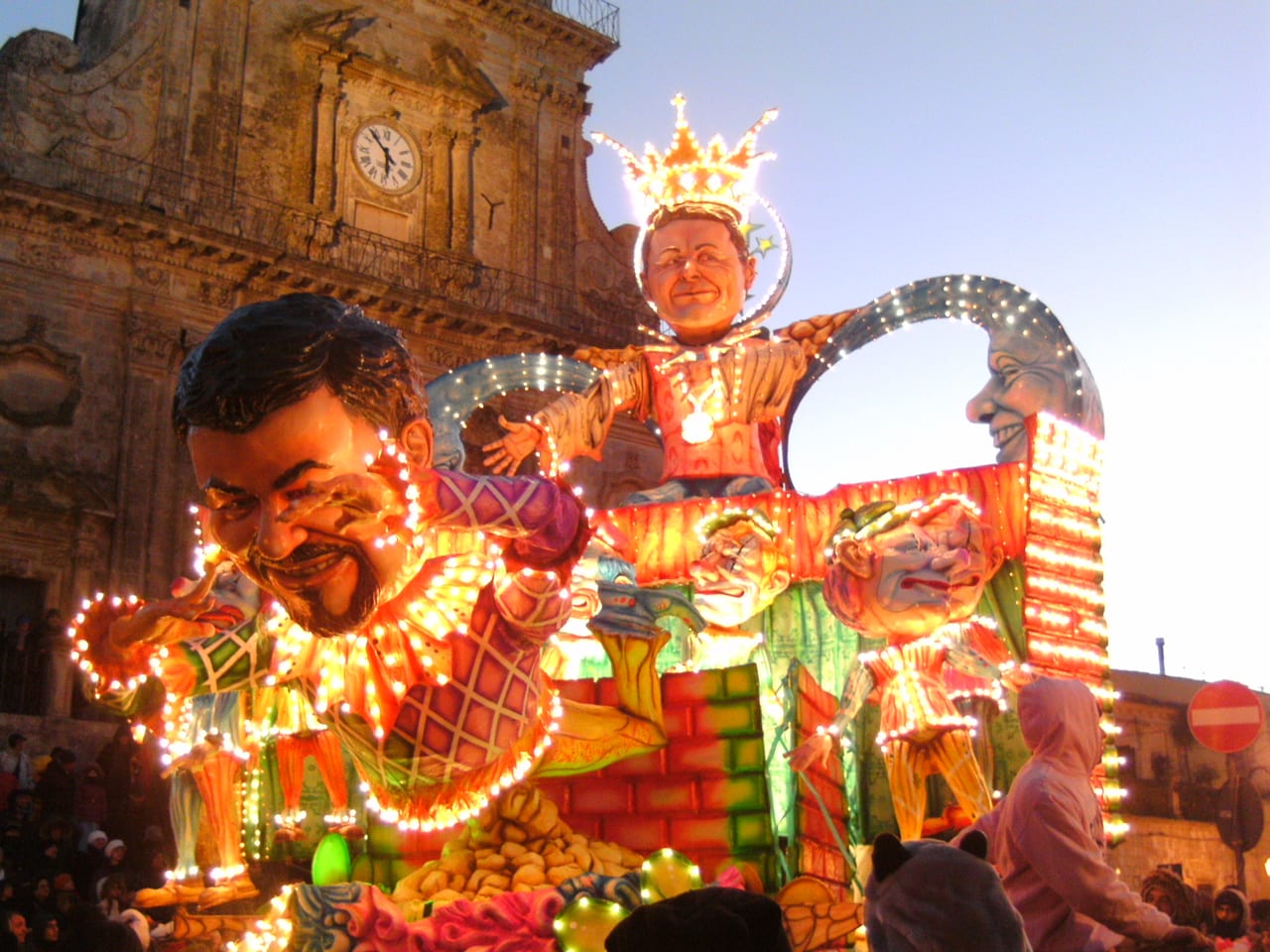
Carnival in Sicily, Palazzolo Acreide. A memorable and unique experience. Photo credit: Mikystar
Winter
January 1: Capodanno
Capodanno is what Italians call New Year’s Day.
Ring in the New Year on December 31st in bars, restaurants and even piazzas throughout Italy, where you’ll undoubtedly see fireworks, and indulge in some of the traditional (and mouthwatering) food.
Although most stores and restaurants are closed on January 1, keep an eye out for special events around the city. In Venice, for example, there’s a traditional swim in the lagoon. Even though we usually don’t recommend swimming in Venice, this is a great exception–if you can stand the freezing water!
January 6: Epiphany
In Catholic tradition, the Epiphany is when the three wise men finally reach the baby Jesus to worship him and give him gifts of frankincense, gold, and myrrh.
Today, it’s an important Italian festival for children because of the arrival of La Befana, an old lady who arrives on a broomstick and fills children’s shoes or stockings with candy.
Though most stores and markets will be closed on this day, many Italian streets will be filled with parades and street fairs in celebration. There will also be boat races in Venice where the racers dress up as La Befana herself!
February: Carnevale
The dates you can celebrate Carnevale in Venice change every year, as the celebration follows the liturgical calendar, so make sure to confirm the exact dates in the official website of the Venice Carnival
Most of the major festivities for this quintessential Italian festival come alive on the weekends, especially the final weekend of the celebration.
Farther south, Viareggio has wonderful Carnevale celebrations each Sunday during February with massive man-made floats. Themes range from nice scenes to satirical political commentary–each well worth seeing!
Finally, on the last three days of the festival, you can go to celebrate Carnevale in Ivrea, a small town in Piedmont where the carnival celebrations conclude with The Battle of the Oranges–a massive food fight where oranges are thrown at opposing groups.
While oranges might sound a little violent, keep in mind that the fight commemorates a medieval battle between the townsfolk and the nobility which resulted in the torching of the local castle.
Though Venice’s world-famous carnival festival receives the most attention, it’s not the only carnival celebration in Italy. Check out the best places to celebrate Carnival in Italy for a complete list!
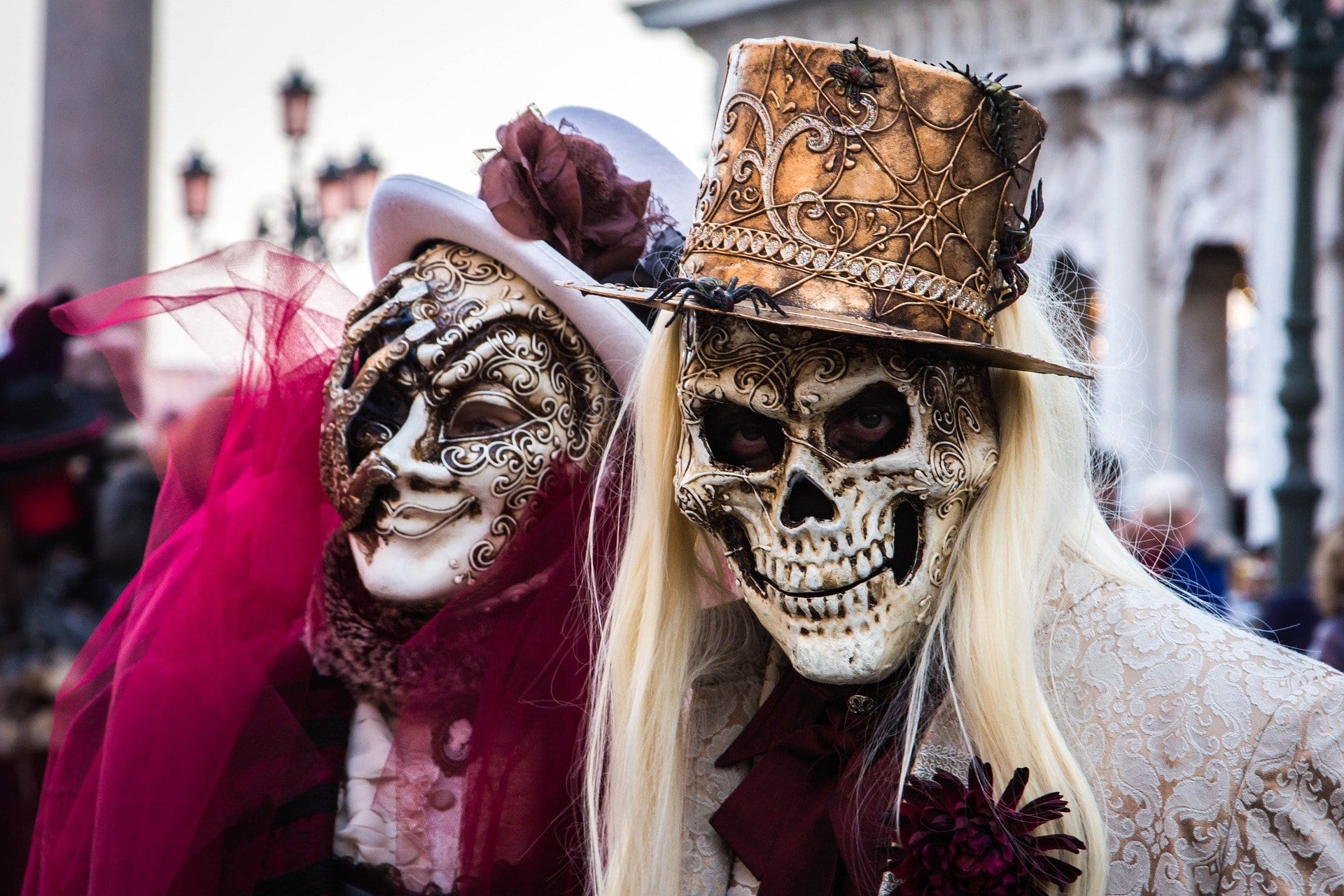
Carnevale Masks in Venice. Photo credit: Ruth Archer
Spring
April 3: Ravello Concerts
Ravello is a popular destination for travelers year-round but it fills up even more during select dates in the spring and autumn for the annual Ravello Arts Concerts.
Far from the throngs of summer tourists, this is a time when music lovers fill the gardens and banquet halls of the historic Villa Rufolo for concerts.
Although it began as a chamber music festival, the event has expanded to incorporate jazz music as well as a variety of other disciplines including art shows, dance performances and exhibitions. Today, it boasts more than 1,750 concerts during the two concert seasons, which means there’s sure to be something to suit everyone!
April 10: Procession of The Mysteries, Sicily
It’s common to find processions and pilgrimages filling streets across Sicily during the Easter Holy Week, but perhaps the most famous of all is the Procession of The Mysteries.
Held in Trapani since 1400, it’s one of the oldest Italian festivals and, at a staggering 24 hours, it’s also one of the longest.
The mysteries are representations of the passion and death of Christ. They’re paraded through the city along with lights, sounds, and surprisingly emotional crowds.
The procession begins at Anime Sante del Purgatorio Church at 2 p.m. on Good Friday and ends with a return to the church at 2 p.m. on Black Saturday. A cultural as well as religious event, if you’re looking for an authentic Italian festival this is one not to be missed.
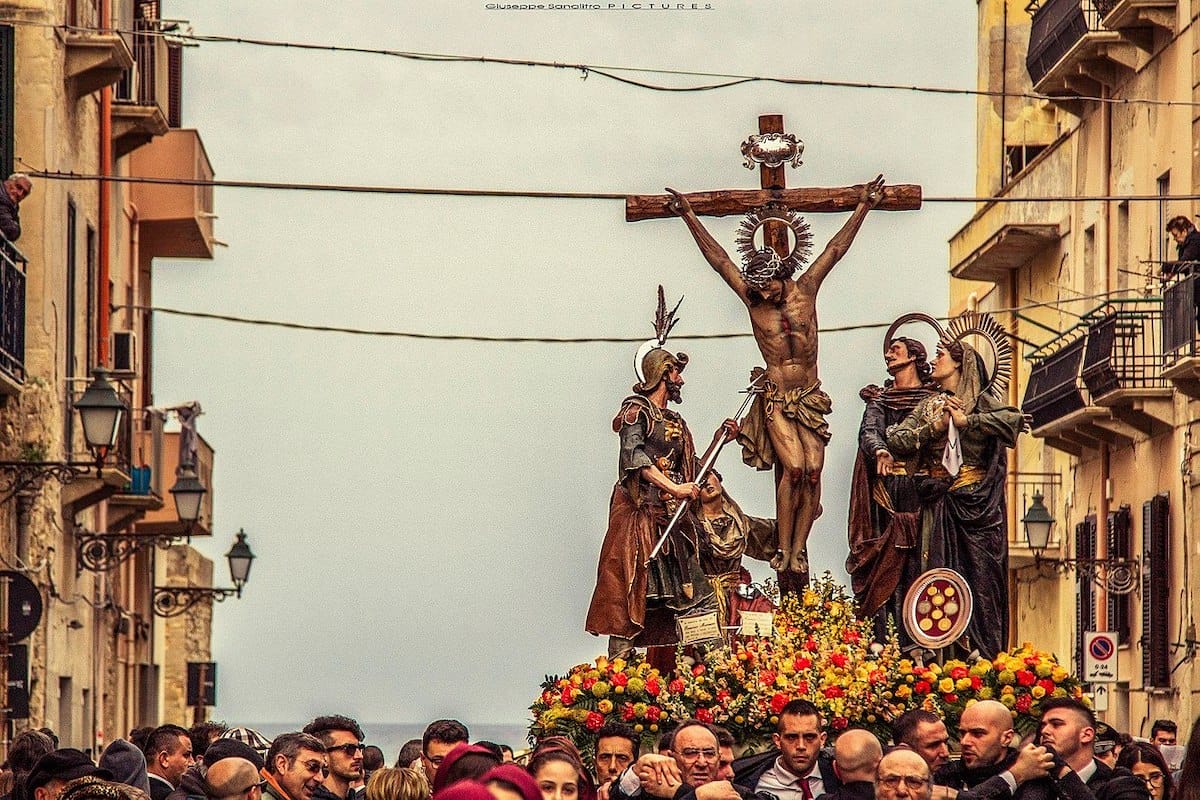
The whole city of Trapani changes and moves around the procession of the Mysteries. Photo credit: Esparco86
April 12: Easter Sunday and the Scoppio del Carro fireworks, Florence
If you’re planning to spend Easter in Italy, here are 5 things you need to know. If you’re spending it in Florence, read on and discover the story of the “explosion of the cart.”
Though Easter Sunday is celebrated with parades and events throughout all of Italy, one of the most memorable is the Scoppio del Carro in Florence. Literally translated as the “explosion of the cart,” this folk tradition commemorates the actions of a young man called Pazzino, a member of Florence’s prominent Pazzi family.
During the First Crusade he was the first knight to go through the breach in the sacking of Jerusalem and was given three stone fragments from the Holy Sepulchre of Jerusalem as a prize. When he returned, he used the fragments to start a Sacred Fire before the people of Florence.
Nowadays, this Italian festival reenacts the scene in its entirety. On Easter Sunday, a large wagon filled with fireworks departs from Porta al Prato, hauled by a team of white oxen with soldiers, musicians, and others, following in 15th-century costumes.
A fire is started using the historic stone, then used to light a string that leads to the cart outside. At the same time Giotto’s Bell Tower bells ring out. The entire firework show usually lasts about 20 minutes and is said to bring good luck–but you’ll want to get there in advance as this free festival fills up fast!
April 13: Pasquetta
The day after Easter–aka Pasquetta or “Little Easter” in Italian–is a national holiday in Italy, and great for Italians, who get the day off work! This is a classic day to meet up with friends post-Easter and head outside to enjoy the new spring weather.
Most families will use this time to enjoy food leftover from the Easter celebrations and festivities. While you’ll find that most sites and museums are open, to celebrate like the locals we suggest preparing a picnic and joining the rest of Italy outside in a nearby park.
April 19-22: Vinitaly, Verona
VinItaly is the largest wine exhibition in the world, and it’s held in the beautiful UNESCO World Heritage city of Verona.
For four days visitors can study, taste, buy and share wine in a gathering that also celebrates food, art, and music. For wine aficionados and amateurs alike, this celebration of Italian wine is one of the best ways to get a taste of Italy.
April 21: Rome’s Birthday Celebration
When in Rome, do as the Romans do. And on April 21st, Rome celebrates its birthday in typical Roman fashion – with a party that lasts for days.
To commemorate the legendary founding of the city by Romulus in 753 B.C., traditional events will take place throughout the city, including the tracciato del solco, or trench-digging ritual, re-enactments of the Palilia ceremony honoring the agricultural goddess Pales, mock Colosseum gladiator battles and other nods to the Eternal City’s epic history and its first emperor.
The celebration culminates in a costumed parade beginning (and ending) at the Circus Maximus. There’s no better way than this lighthearted Italian festival to truly partake in the city’s rich history.
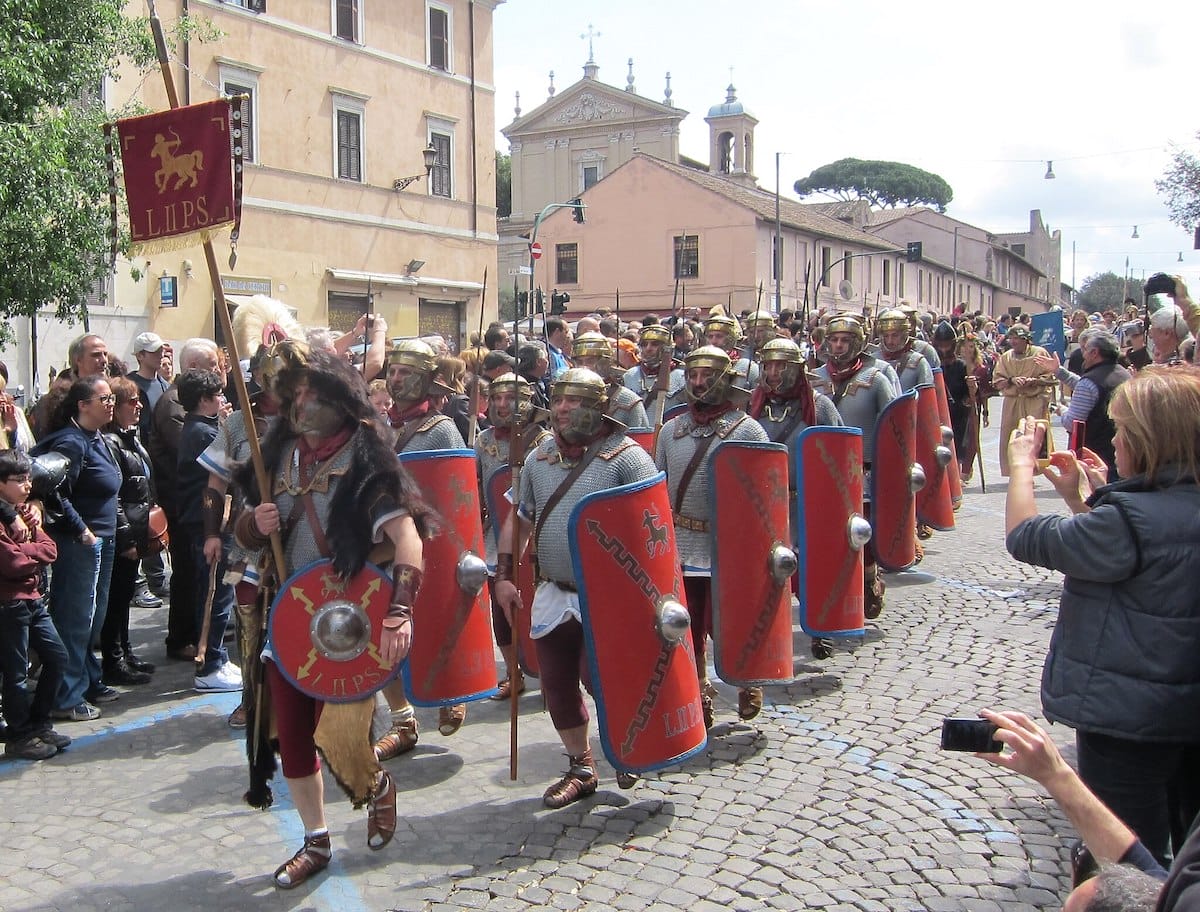
Celebrate Rome’s birthday with events and parades. Photo credit: Art Anderson
April 25: Italian Liberation Day & St. Mark’s Day, Venice
The Festa della Liberazione, or Liberation Day, on April 25th marks the end of WWII in Italy, and the day Italy gained independence following Nazi occupation. Band performances, concerts, food stalls, political rallies, and other public events commemorate the victory of the resistance as well as the end of the Fascist regime.
You’ll see this date on many street signs throughout Italy, and today it stands as a national public holiday, which means that most stores will be closed or operating on weekend hours.
April 25th also happens to be the feast day of St. Mark, the patron saint of Venice. Venetians celebrate their beloved saint with a gondolier regata (boat race) and a huge party in Saint Mark’s Square.
The feast day also coincides with an ancient tradition called the Festa del Bocolo, or “blooming rose festa”, when men present the women in their lives with a red rosebud (bocolo). Whatever you’re there to do, expect crowds in Venice and don’t forget to bring a rose for your significant other!
May 1: Labor Day
Another national holiday, May 1st marks Italy’s national Labor Day.
In Rome, it is celebrated with a large concert, or concertone, organized by Italy’s main trade unions, which is used to raise awareness about labor issues in the country.
Not only does it attract top artists, it draws attendees from all over the world. On this day, expect major museums to be closed and limited choices for public transportation. Italians are off work en masse and the weather is usually nice, meaning it’s a busy weekend for popular destinations throughout the country.
May 24: La Cavalcata Sarda, Sardinia
To mark the beginning of spring, Sardinia holds one of its biggest events in Sassari with the Cavalcata Sarda, or Sardinian Horse Race on the second last Sunday of May.
Participants dressed in traditional costumes parade through town on horseback, before meeting on a race track at the edge of town for horse races and stunts.
Held annually since 1899, the festival marks the day when King Umberto I of Italy visited the city to unveil the Piazza d’Italia. Today, the two-day event is proof of the Sardinian’s pride in their history, culture, and island.
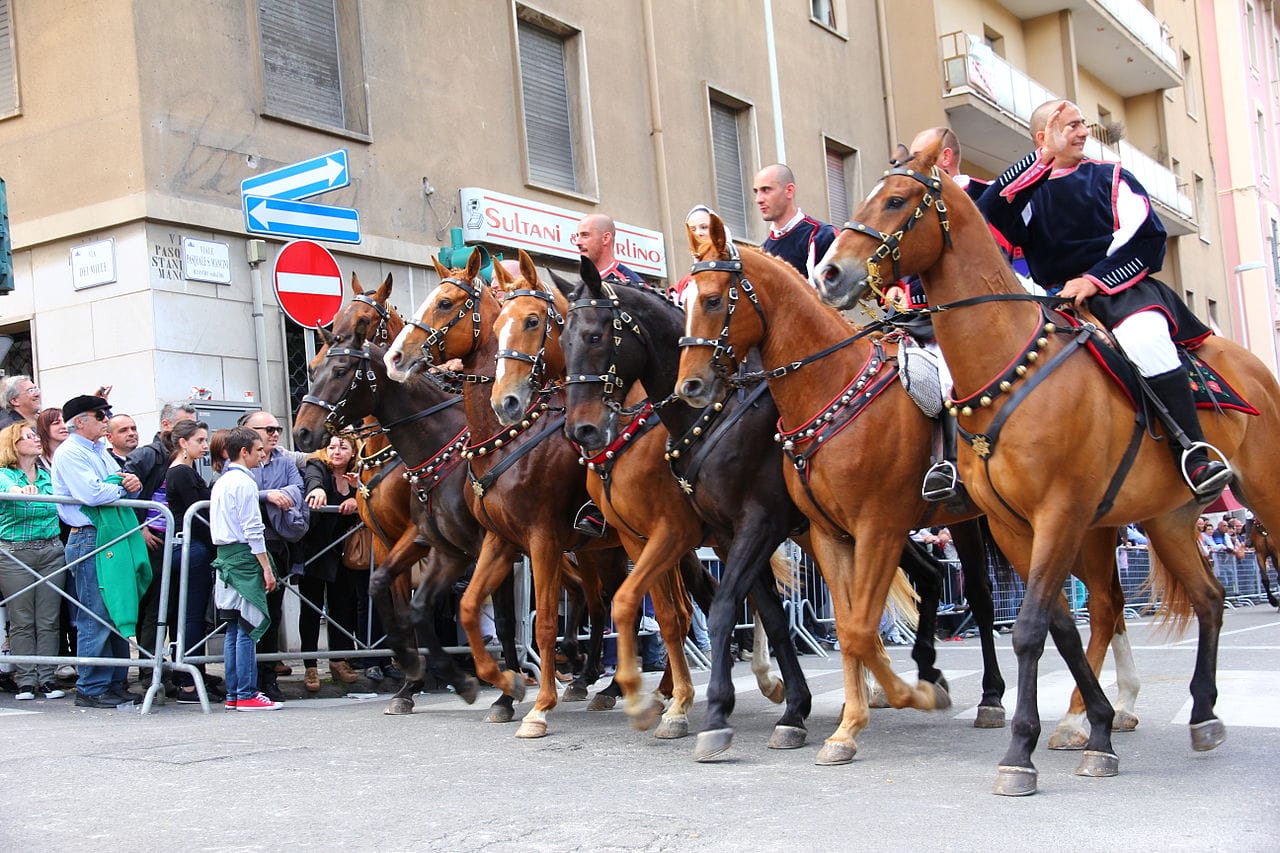
If you’re in Sardinia, don’t miss la Cavalcata Sarda. Photo credit: Gianni Careddu
May 23-November 29: Venice Biennale
The Venice Biennale is an international cultural exhibition held in Venice.
Art, architecture, cinema, dance, theater, and music exhibitions are held in various locations throughout the city, in the main Biennale Garden pavilions and, most notably, in many of the astounding private buildings and villas in Venice.
If you have visited the city before and want to peek inside all those beautiful mansions, this is probably the best way without knowing someone who owns one of said mansions.
Make sure to check out the official website of La Biennale di Venezia to check out their massive program and find all the related events and activities of your area of interest.
May 15: Festa dei Ceri in Gubbio
One of the oldest Italian folklore events, the Festa dei Ceri in Gubbio is an annual race devoted to St. Ubaldo, the patron saint of Gubbio.
On May 15th, every year, the people of Gubbio take part in a mystical procession where they carry enormous wooden “candles” from the town center all the way up Mount Ingino to the Basilica of St. Ubaldo. Each candle is crowned with a statue of a saint and the entire structure weighs around 700 lbs. It’s not a fast race, but it’s certainly a unique one!
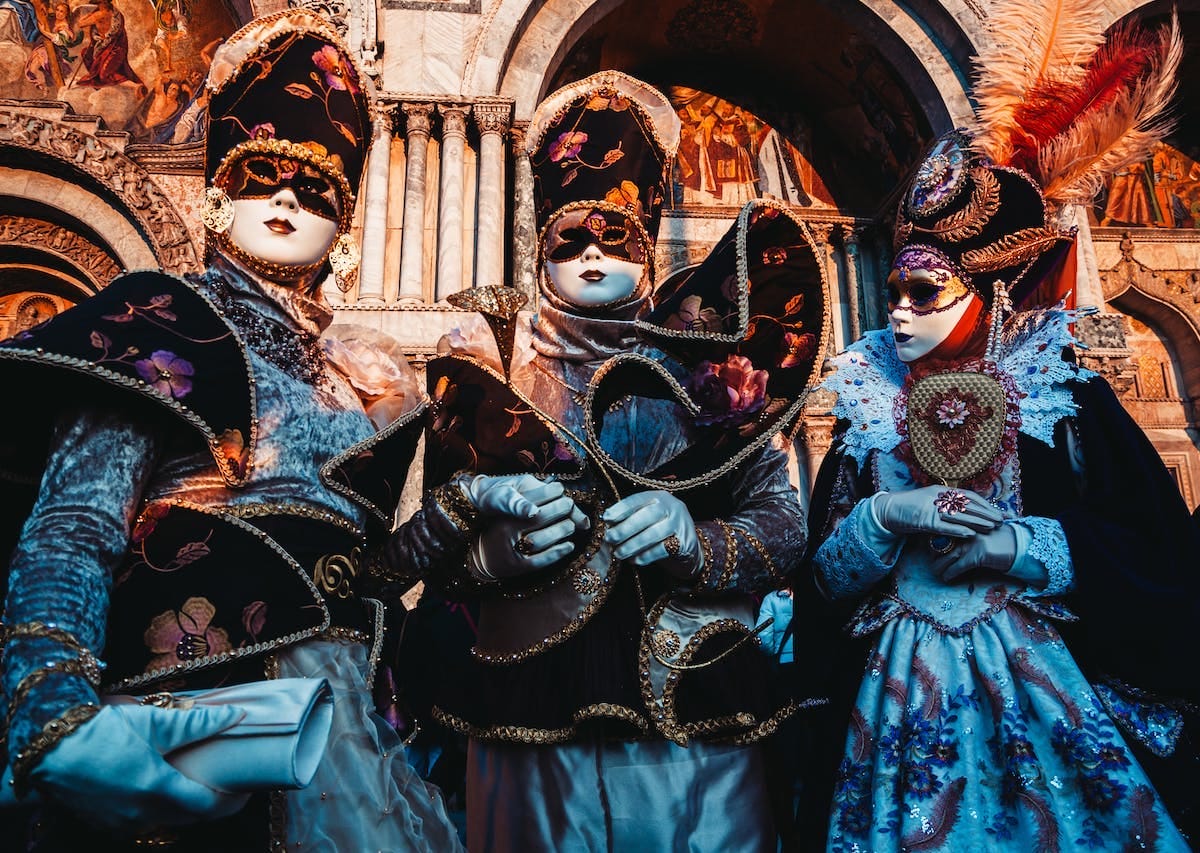
Spring is the season to enjoy Italy’s festivals with costumes and creativity. Photo credit: Helena Jankovičová Kováčová
Summer
May 31: Vogalonga Regata, Venice
The first Vogalonga Regatta took place in 1974, which is young for an Italian festival, but it brought out more than 500 boats and 1,500 rowers.
The enormous gondola race was created to protest the use of motor traffic in Venice’s canals and renew a sense of pride in Venetian handicrafts and traditions.
Today, approximately 1,550 boats with about 5,800 rowers participate every year on Pentecost for the 30-kilometer race through some of the most scenic parts of Venice’s canals and lagoons.
June 2: Anniversary of the Republic
The Festa della Repubblica celebrates the foundation of the Italian Republic. On June 2, 1946, Italians voted in a referendum to abolish the monarchy and establish a republic in its place. Following the results, the Italian royal family, who had ignited unfavorable opinion by supporting Mussolini, were forced to flee Italy.
Rome holds the largest celebration but, depending on where you are, you can find anything from parades, festivals and concerts to mark the occasion. Luckily, most major sites and museums remain open.
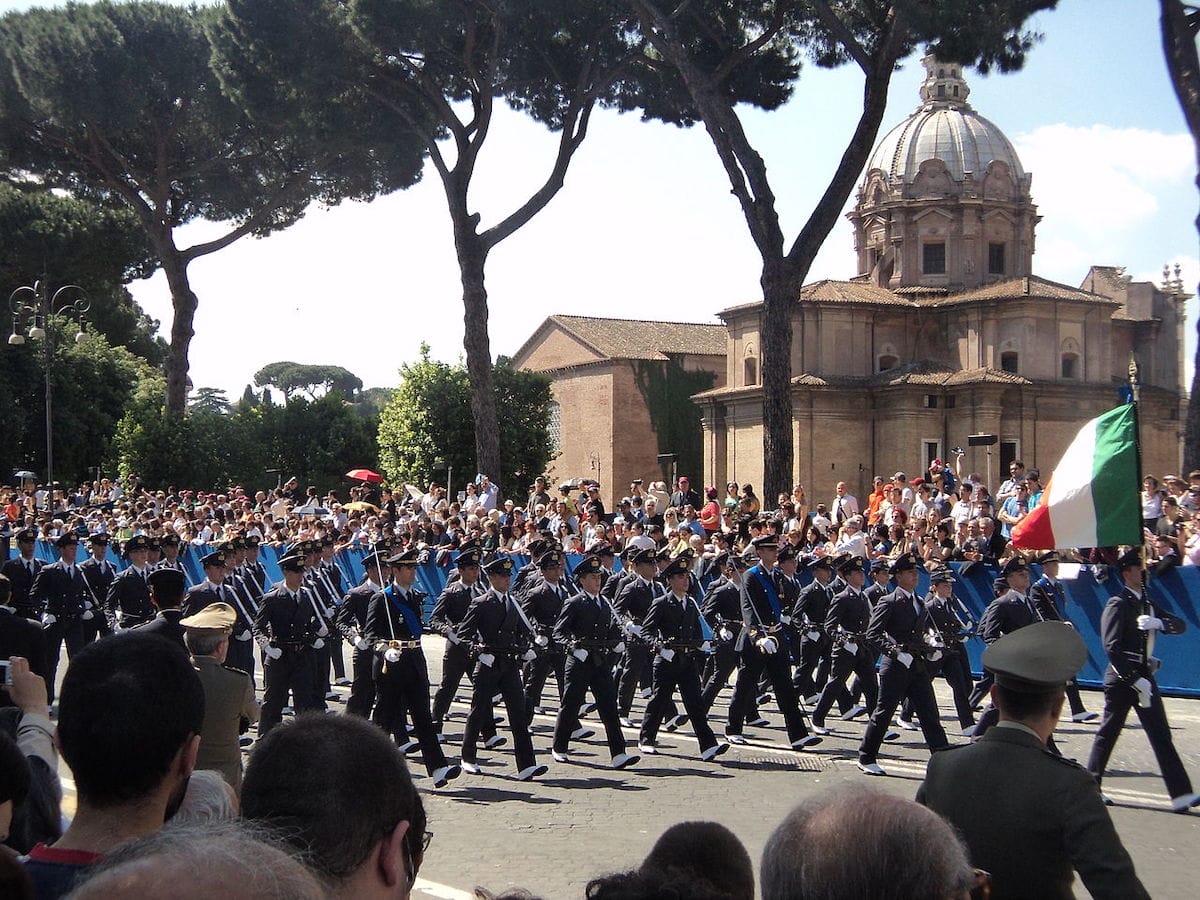
La Festa della Repubblica is Italy’s festival to celebrate the creation of the Italian Republic. Photo credit: Nicholas Gemini
June 16-17: Festival of St. Ranieri, Pisa
This Italian festival has much older roots, dating from 1688 when the remains of Saint Ranieri were placed in an urn at the Cappella dell’Incoronata at the city’s Cathedral.
A special feast was held including a Luminera where the river and prominent buildings were lit up by candlelight and lamps. This was often done during the time to mark special events and occasions, but the tradition has become tied to Saint Ranieri down through the years.
Today, on June 16th, the churches and buildings lining the Arno, including the cathedral housing the saint’s remains, are lit up with over 70,000 lights and candles. The lights are amplified by their reflections in the water, making for a spectacular sight.
The celebration also features fireworks, creating a magnificent spectacle. The Festa dei Ranieri, in Pisa, ends with a spectacular boat race on the Arno River on June 17th (the city’s feast day).
June-August: International Festival of Arts in Taormina, Sicily
Also known as Taormina Arte, the town’s reputable cultural festival runs throughout the entire summer and hosts concerts, exhibitions, and the Taormina Film Fest, bringing the best of film into a week of premieres and photo shoots akin to the film festival at Cannes.
Head to Taormina in the summer and you’ll have your pick of plays, music, dances, cinemas and other events to choose from–including the opera!
June – September: Taormina Opera Festival
Coinciding with their art festival, Taormina’s Summer Opera Festival starts in April and runs through the summer, with some concerts running until December. This is a great opportunity to see classics like Carmen and Don Giovanni performed at very reasonable prices.
The shows are performed at the town’s Teatro Antico, a huge open-air Greek theater with views across to Mount Etna, as well as the Teatro Greco in Syracuse, further down the coast. You can buy your tickets online or at the box office at Palazzo dei Congressi.
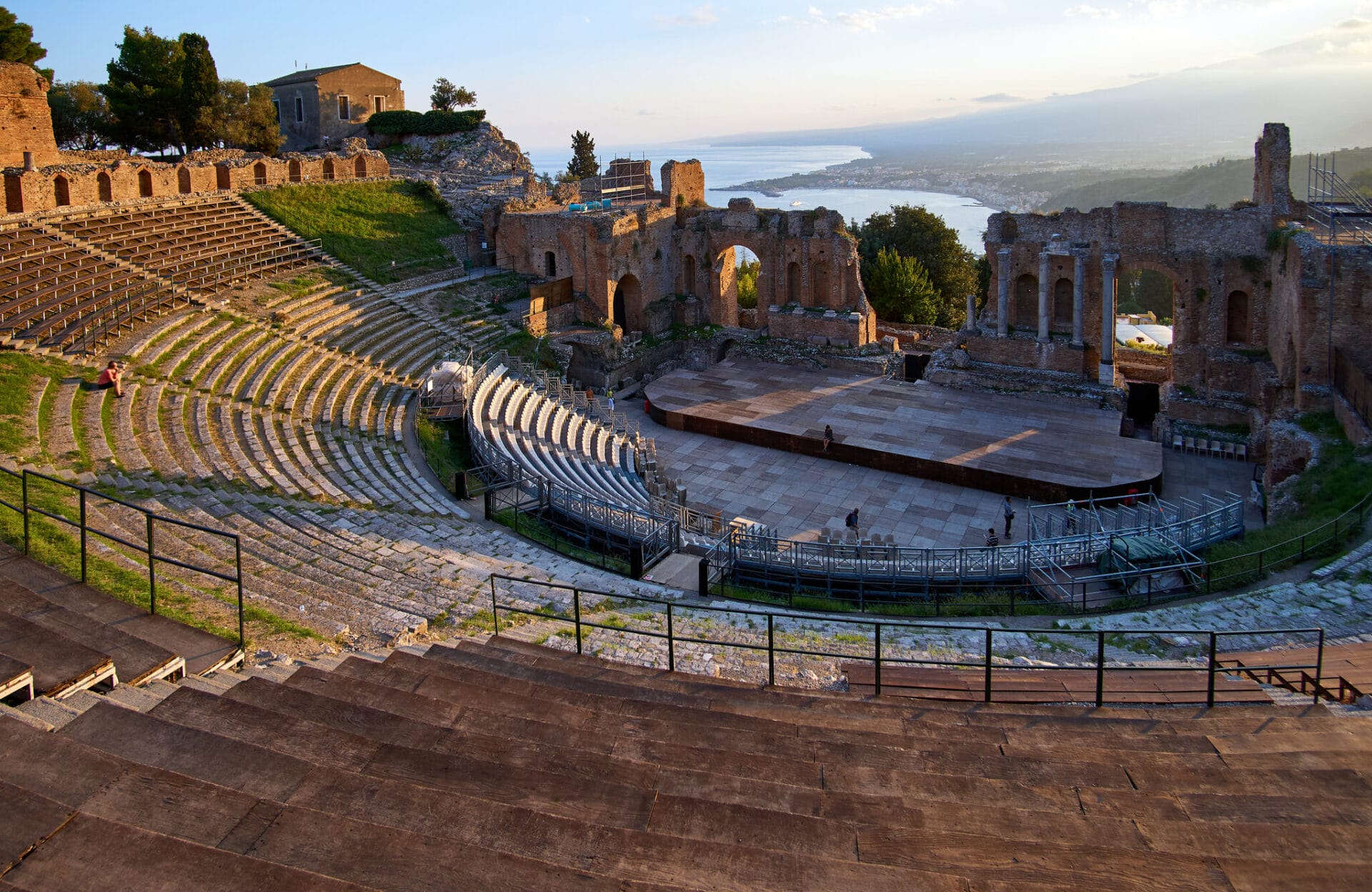
Travel through time with Taormina’s festivals in a great setting. Photo credit: Radek Kucharski
June 13-September 05: Verona Arena Summer Opera Season
Each summer marks the start of Verona’s incredible summer opera season. With affordable tickets and incredible operas, this is not only the perfect place to dip your toe into the opera world, it also happens in one of the world’s most jaw-dropping concert venues.
The operas are held in the Verona Arena, an open-air Colosseum equivalent that’s more than 2,000 years old. Like the Colosseum in Rome, it has been used for countless purposes over the years but it gained a new lease of life in 1913, when it began to host operas.
Verona is not the only city in Italy with a musical festival. Besides Taormina, you can also head to Lucca, in northwestern Tuscany for their annual Summer Festival. Here you’ll be treated to some of the best pop and rock of the year. Past performers include John Legend, Take That, Bob Dylan, and Sting.
July 10-19: Umbria Jazz, Perugia
Each July, Perugia hosts a 10-day Jazz Festival. Music lovers fill the town’s beautiful piazzas, gardens, and wine bars to experience one of the world’s best-known jazz festivals.
As a university town, Perugia hosts a fair number of international Italian festival events, such as the scrumptious Eurochocolate and the International Journalism Festival, but there are few things more relaxing than a spectacular jazz concert in an equally spectacular setting.
August 15: Ferragosto
The Feast of the Assumption marks the day the Virgin Mary rose into heaven in the Catholic faith. This Italian festival is now popularly called Ferragosto and it marks the start of the country’s annual vacation period.
From this date until the beginning of September you’ll find many signs on restaurants and shops in the big cities declaring chiuso per ferie, or closed for vacation.
Italians typically celebrate Ferragosto by retreating to the coast or countryside with friends and family. Watch out, you might get caught up in the traffic of Italians or the crowds along the coast.
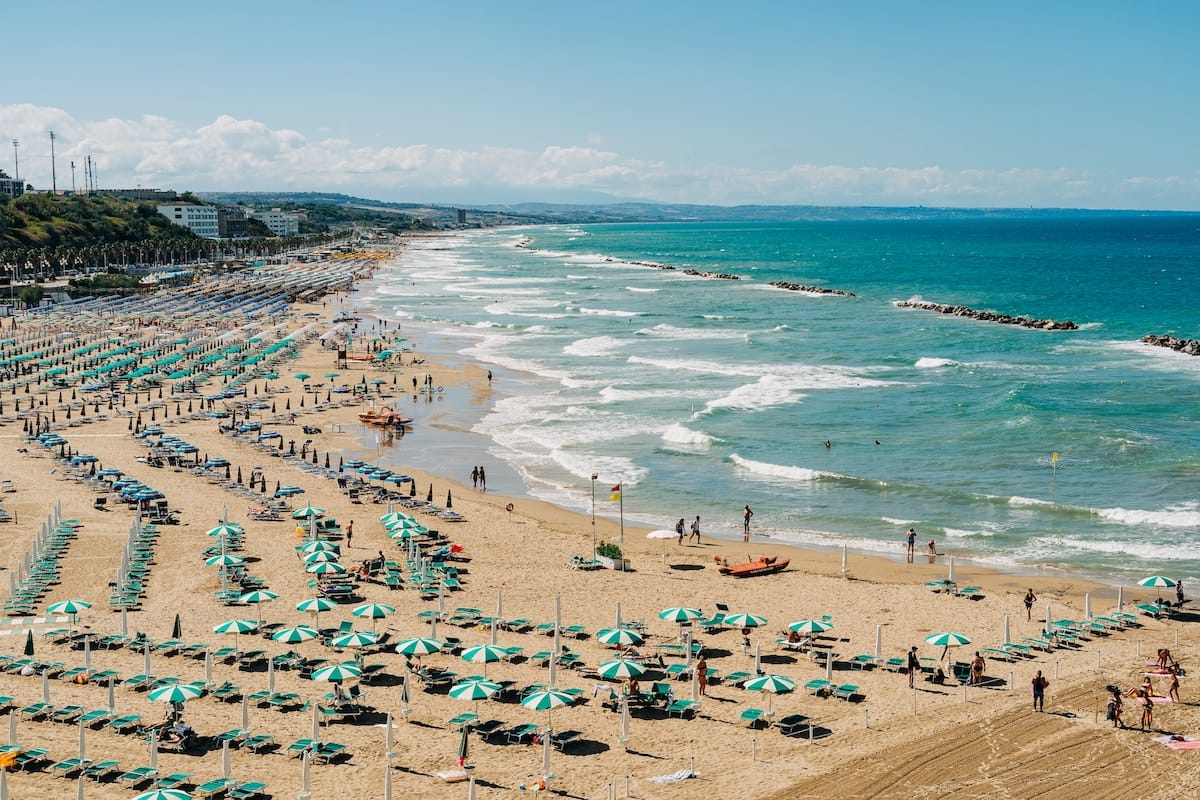
Ferragosto is the time Italians decide they’d rather be out of the cities, enjoying Italy’s festivals. Photo credit: Gabriella Clare Marino
August 16: Palio dell’Assunta, Siena
This ancient horse race is held twice each year, on July 2 and August 16, but the 16th tends to be the most famous, as it’s so near to a national holiday.
Formerly titled Palio di Siena, it was renamed the Palio dell’Assunta, in honor of the Assumption of the Virgin Mary the day before.
This medieval tradition pits Siena’s different neighborhoods, or contrade, against each other in a hair-raising bareback horse race around the central Piazza del Campo, which is covered in dirt for the event. The winning jockey claims bragging rights for his contrada for the entire year.
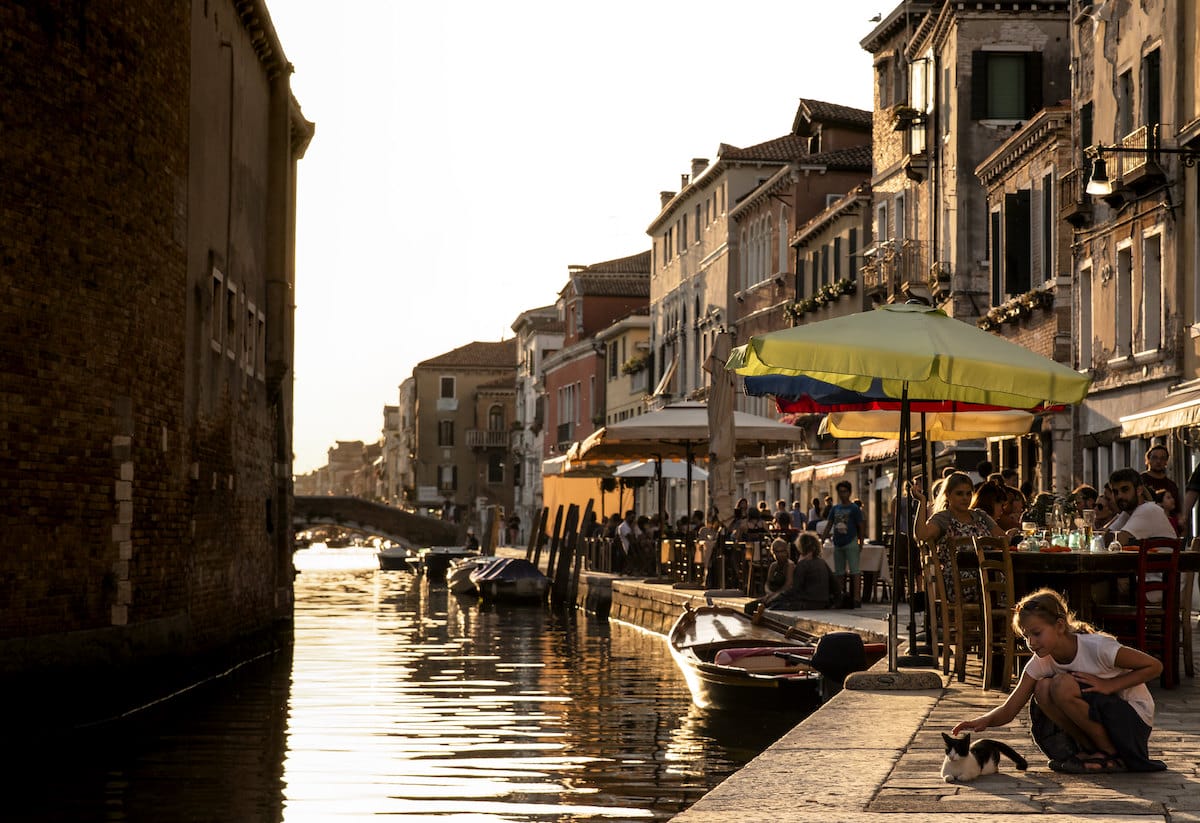
Summertime is an opportunity to be outside, share with friends, and enjoy Italy’s festivals wherever you go. Photo credit: Filippo Gatteschi
Fall/Winter
September: Regata Storica di Venezia
Practiced for thousands of years, Venice’s Historical Regata is a huge event that includes a water pageant featuring costumes and boats from the 16th-century, with a procession to carry the Doge of Venice, his family, and all the officers up the Grand Canal.
After the event, four different races are held based on age and boat type, but a firm favorite is the Campioni su Gondolini race, with small, fast gondolas flying down the Grand Canal to victory.
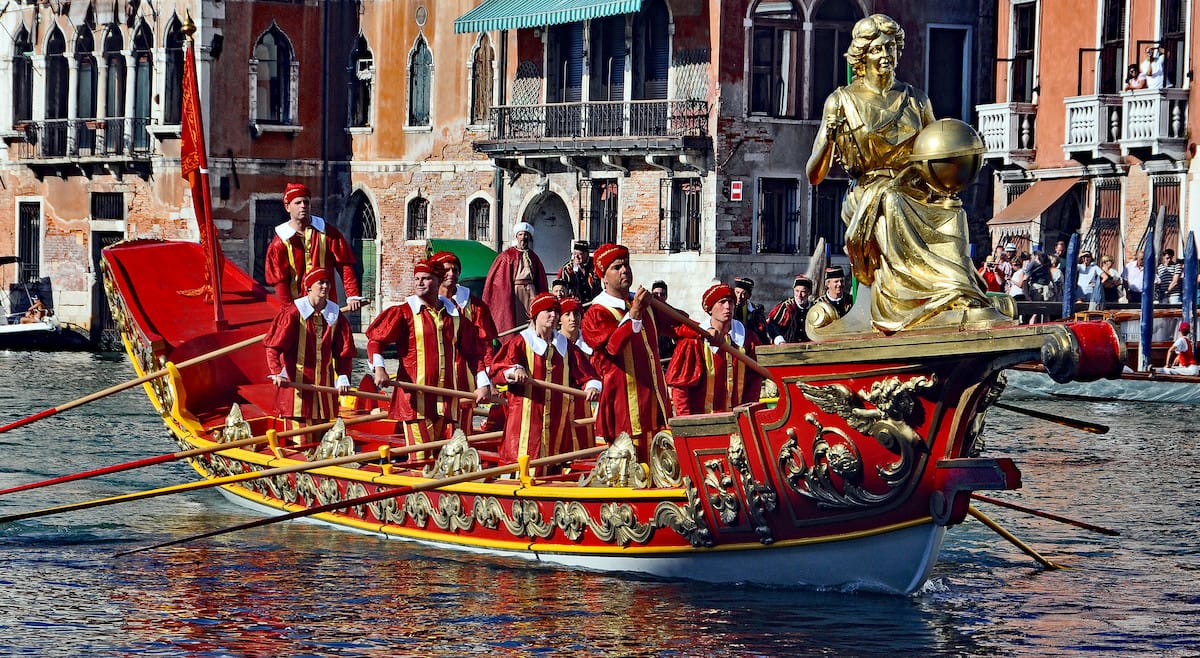
La Regata Storica di Venezia is one of Italy’s festivals you must not miss: history, culture, art and beautiful gondolas! Photo credit: Hervé Simon
September 2-12: 77th Venice International Film Festival
Alongside Cannes and the Berlin International Film Festival, Venice’s Film Festival is one of the ‘Big Three’ film festivals in the world.
Founded in 1932 as part of the Venice Biennale–which celebrates international art, architecture, dance, music, theater, and cinema–it is also one of the oldest.
Events and screenings take place on the island of Lido in the Venice Lagoon, in the famous Palazzo del Cinema.
October-November: Italy’s Sagre Harvest Festivals
October and November are the prime months for some of the most beloved festivals in Italy – the delicious sagre, or food festivals.
Typically based around a single, seasonal ingredient, these festivals celebrate a bountiful harvest and the changing of the season. Some of the most famous are the truffle festivals in Piedmont and Umbria, chestnut sagre in Tuscany, and olive sagre in Puglia.
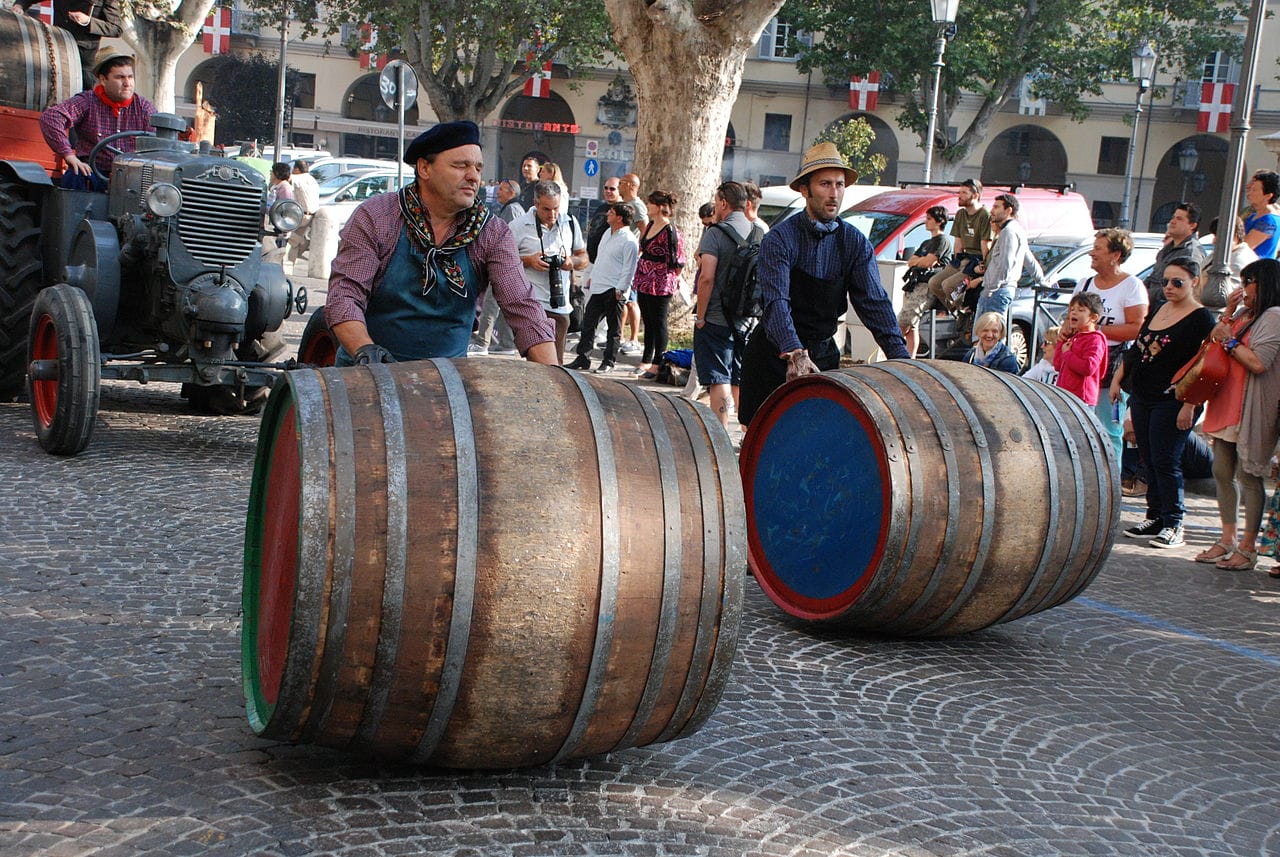
These harvest and food parades and events are some of Italy’s festivals that will surprise you and delight you. Photo credit: Phyrexian
October 16-25: Eurochocolate in Perugia
Eurochocolate is the International Chocolate Exhibition of Europe. One of the largest chocolate festivals in all of Europe, discover different chocolate flavors and cultures from around the world, participate in cooking classes, performances, chocolate-sculpting displays, and, of course, buy and eat all the chocolate you’d like!
You can also take a tour of the chocolate factory or simply peruse the events going on at the squares around Umbria.
Taking place since 1993, when it comes to Italy’s festival, this one is a true delight for all chocolate lovers!
November 1: All Saint’s Day
All Saint’s Day is part of the oft forgotten Allhallowtide triduum, which runs from 31st October – 2nd November, encompassing All Hallow’s Eve, All Saint’s Day and All Soul’s Day.
All Saint’s Day is a Catholic holiday in commemoration of Saints in general, but particularly to honor those who do not have designated days of their own. In Italy, the day is marked with Ceci con le Costine, a special soup made with chickpeas and pork ribs. Legend has it that if you eat this soup on November 1st, you’ll be blessed with good luck throughout the year.
According to Pagan beliefs, this time of year was when the veil between the living and the dead was at its thinnest. And so, All Soul’s Day is when the dead are remembered by the living. As well as religious services including prayers for souls in purgatory and the giving of Alms, informal services are held at homes.
Because the dead are believed to return on this day, places are left for loved ones during meal times in Italian households. Unsurprisingly, food plays a major part of the festival in Italy, and homemade specialities such as fave dei morti and cotognata are enjoyed.
December 8: Immaculate Conception
A traditionally Catholic holiday celebrating the Virgin Mary’s immaculate conception, Italians use this date to mark the official start of the winter holiday season.
This is the weekend when trees, lights, and decorations go up around Italy and Christmas markets spring up in cities and towns.
Typically a long weekend, it’s a great time to soak in the Christmas atmosphere but beware that restaurants and hotels can often book up far in advance.
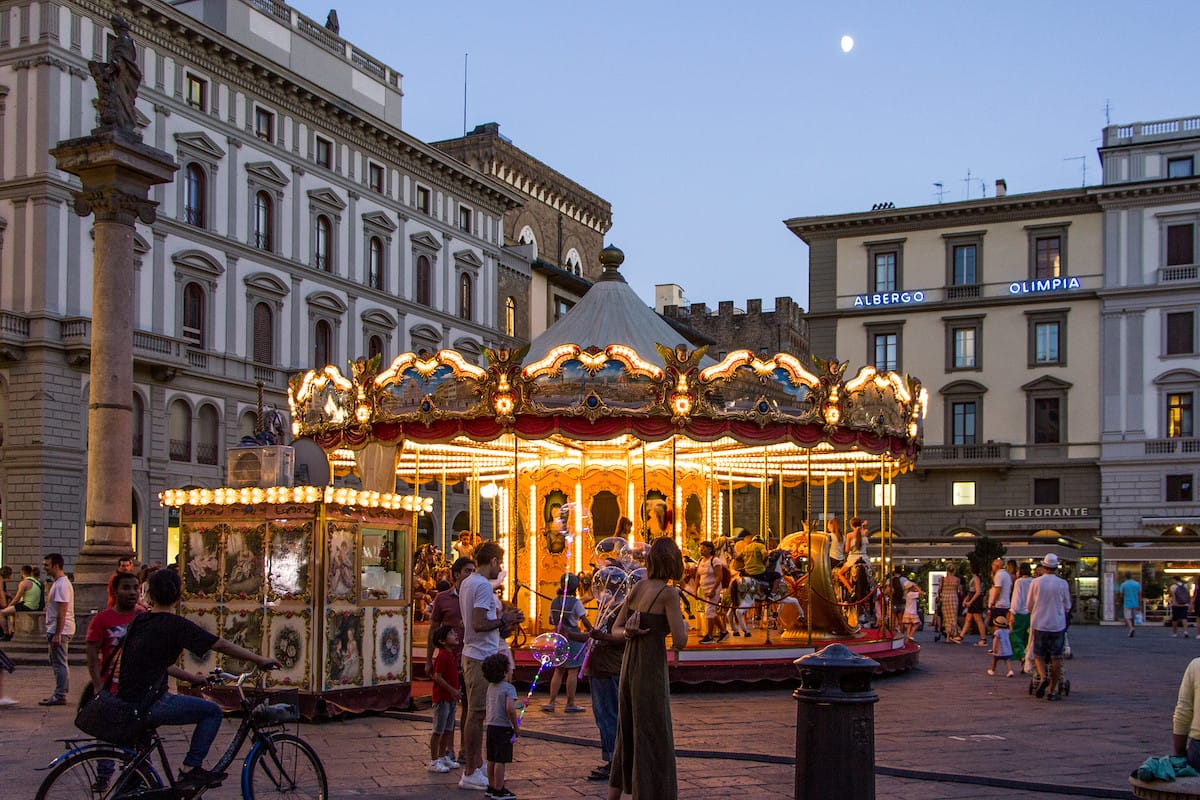
Winter is, of course, the season of Italy’s festivals regarding Christmas. Photo credit: Billy Wilson
December 25-26: Christmas Day and Santo Stefano
On Christmas Eve and Christmas Day, you can participate in a midnight mass in any town in Italy, and enjoy the many different nativity scenes set up in seemingly every spare corner.
In some places where the locals take specific pride in their nativity scenes, like Assisi, some of them may even feature real people and animals!
On Christmas Day, most things are closed, so if you want to eat out, choose a restaurant beforehand and make a reservation (find out more about having a Christmas meal in Italy here).
The day after Christmas Day is known as St. Stephen’s Day, and it’s also a public holiday in Italy, with banks, museums and shops often staying closed–so plan accordingly!
Update Notice: This post was updated on January 9, 2024.
